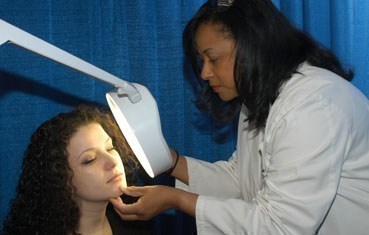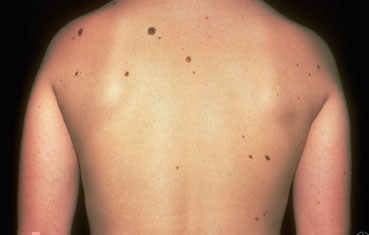
Skin cancer screening: If a mole starts to grow, itch, or bleed, make an appointment to see a dermatologist.
Moles are common. Almost every adult has a few moles. Adults who have light skin often have more moles. They may have 10 to 40 moles on their skin. This is normal.
You should not be overly worried about your moles. But you should know:
- A type of skin cancer, melanoma, can grow in or near a mole.
- Caught early and treated, melanoma can be cured.
- The first sign of melanoma is often a change to a mole — or a new mole on your skin.
- Checking your skin can help you find melanoma early. A dermatologist can show you how to examine your skin and tell you how often you should check your skin.
If a mole starts to grow, itch, or bleed, make an appointment to see a dermatologist.
Moles in children: What parents should know
Moles on a young child’s skin are generally nothing to worry about. It is normal for new moles to appear during childhood and adolescence. Moles will grow as the child grows. Some moles will darken, and others will lighten. These changes are expected in children and seldom a sign of melanoma — a type of skin cancer that can begin in a mole.
Moles: Diagnosis, treatment, and outcome
How do dermatologists tell whether a spot is a mole?
A dermatologist’s trained eye can often tell whether a spot is a mole.
How do dermatologists treat moles?
Most moles do not require treatment. A dermatologist will remove a mole that:
- Bothers a patient (rubs against clothing, etc.).
- A patient finds unattractive.
- Could be skin cancer.

Atypical moles: Melanoma can grow in an atypical mole. Anyone who has atypical moles, such as this patient, should watch his or her moles for change.
A dermatologist can remove a mole during an office visit. A few moles will require a second visit. Whether it’s during 1 or 2 visits, a dermatologist can safely and easily remove a mole. A dermatologist will use 1 of these procedures:
- Surgical excision: The dermatologist cuts out the entire mole and stitches the skin closed. If the dermatologist suspects that the mole contains cancer, the dermatologist will send the mole to a lab. It will be examined under a microscope. This is called a biopsy.
- Surgical shave: The dermatologist uses a surgical blade to remove the mole.
Never try to shave off a mole at home.
Here’s why you should never try to shave off a mole at home:
- If the mole contains skin cancer, some of the cancer cells can stay in the skin — and even spread.
- You can disfigure your skin, causing a scar or other permanent reminder.
- You can cause an infection.
Outcome
After a mole is removed, the skin will heal. If the mole grows back, immediately make another appointment to see your dermatologist. This is a sign of melanoma, a type of skin cancer.



